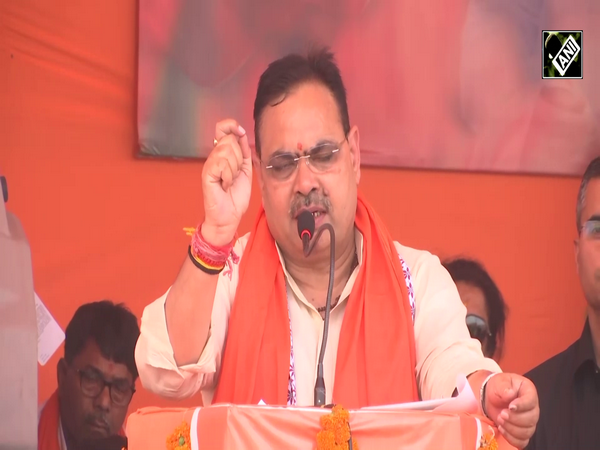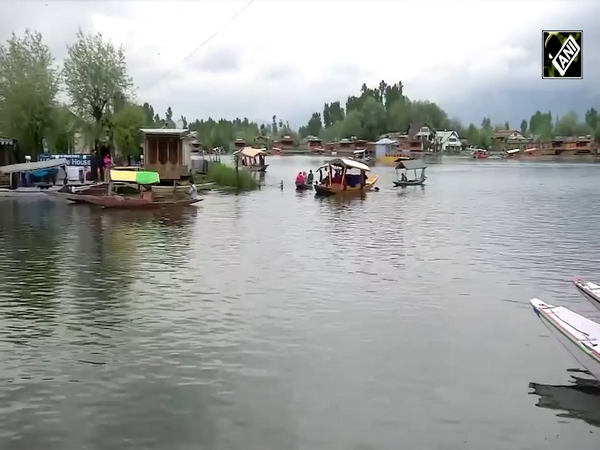NMCG ensuring pristine flow of Ganga in Varanasi
Mar 04, 2023

New Delhi [India], March 4 : Varanasi in Uttar Pradesh is one of the oldest and most spiritual cities in the world. It is said- the city of lord Shiva-Varanasi is the gateway to heaven. Situated on the banks of the holy river Ganga, it is the most sought-after pilgrimage site for millions of Hindus living in India and abroad.
Every day lakhs of pilgrims and visitors come to the city to take a holy dip into the pious river, Ganga. For them, it is one of the most sacred events of their lifetimes. Upholding this faith of millions in the holy waters of river Ganga, the National Mission for Clean Ganga (NMCG)dutifully took up the onus of keeping it clean of solid waste, untreated sewage and other pollutants.
G Asok Kumar, Director General, NMCG said, "Depending upon the capacity, we have diverted and made allocations of the sewage distribution also on various STPs. The old trunk lines which were laid, many of them were choked and were not functioning properly, so that has been cleaned up and relieving trunk has been laid, so a lot of sewage network and cross allocation of the sewage in various districts have been done to ensure that the STPs are functional. As of now, there should not be any outflow of sewage directly into the river anywhere".
In the densely populated city of Varanasi, over 300 million litres of sewage is generated on a daily basis. Since the colonial era, Shahi Nala in Varanasi has remained the main drainage line. It used to discharge around 35-40 MLD of untreated sewage directly into the river Ganga. Taking note of this unabated pollution of river Ganga, NMCG has now closed the 200-year-old drain and has diverted it to Chauka Ghat Sewage Pumping Station from where it is further pumped to 140 MLD Sewage treatment plant in Dinapur.
The sewage is cleaned and treated at Dinapur STP with several clarification processes before it is discharged into the river Ganga. Other than Dinapur, a number of STPs and pumping stations are rehabilitated and constructed in Varanasi for the treatment of large sewage and effluent discharge, 50 MLD STP in Ramana, 10 MLD in Ramnagar, 120 MLD in Goitha and 10 MLD in Bhagwanpur are already operational in the city- boosting the sewage treatment capacity of Varanasi to 420 MLD.
SK Barman, Project Manager at Ganga Pollution Prevention Unit in Varanasi said, "We have a total sewage treatment capacity of 420 MLD in Varanasi, earlier it was just around 100 MLD. Later it was increased by 120 MLD under JNNURM (now AMRUT) and 200 MLD under Namami Gange Programme. Once our other two projects are completed, no untreated sewage will fall into Varuna and Ganga rivers".
The newly constructed Namo Ghat by the government is witnessing a large tourist footfall these days. Sculptures of folded hands depicting greetings to the most pious river of the country have become the main tourist attraction. Apart from several Ganga cleanliness projects taken up by NMCG, a special emphasis is being laid on the modernization and renovation of ghats along the river Ganga. NMCG has rehabilitated as many as 26 ghats in the city of Varanasi. The visitors seemed elated and satisfied with the efforts done by the NMCG in the renovation and maintenance of ghats along the river Ganga.
Rajesh Kumar Patel, a visitor in Varanasi said, "Special emphasis is being laid on the cleanliness of the ghats along with the maintenance. Also, renovation of the ghats has been done. Earlier, I used to see that cleanliness on ghats was not maintained properly but now as soon as the water recedes, sanitation is carried out on a mission mode".
The famous Ganga Aarti on the ghats of Varanasi is a festival to behold. Thousands of tourists and pilgrims crowd the ghats to witness the scene of illumination. This also showcases the faith and reverence the people have for the river Ganga. Keeping this faith alive, NMCG is instrumental in maintaining the sanctity of this city and the pureness of Ganga waters.


















